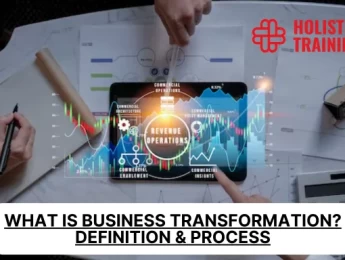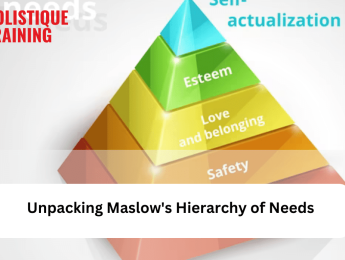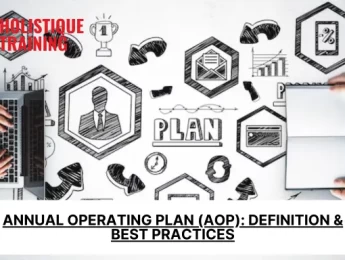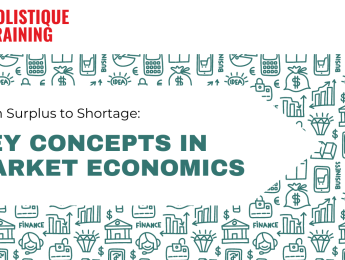- Table of Contents
- Who Makes Decisions in Engineering Projects?
- The Importance of Decision-Making in Engineering
- What Factors Influence Engineering Decisions?
- What Is the Decision-Making Process in Engineering?
- Ethical Considerations in Engineering Decision-Making
- Artificial Intelligence and Decision-Making in Engineering
- Conclusion
Introduction
In the ever-evolving landscape of engineering, making decisions is a fundamental aspect that significantly impacts the outcome of projects. These decisions shape the course of development, innovation, and progress in the field. The complexity of engineering projects demands a well-structured decision-making process that involves key stakeholders and considers various influencing factors. In this blog post, we will explore the dynamics of decision-making in an engineering environment, highlighting its importance, the involved parties, the factors influencing decisions, and the decision-making process itself.
Who Makes Decisions in Engineering Projects?
In engineering projects, decisions are not solely made by a single individual or department. Instead, they involve a diverse group of stakeholders, each contributing their expertise to the process. These stakeholders typically include:
a. Engineers
Engineers stand as the cornerstone of decision-making in engineering projects. Armed with technical knowledge honed through years of education and practical experience, engineers assess the viability of different options. They delve into the intricacies of materials, structural integrity, and mechanical functionalities, ensuring that decisions are grounded in the solid foundation of technical feasibility. Their analytical minds decipher complex problems, paving the way for innovative solutions and informed choices.
b. Project Managers
Project managers assume a pivotal role in the decision-making landscape. Charged with overseeing the entirety of the project, they wear multiple hats. They translate the vision into actionable plans, coordinate efforts among diverse teams, and ensure that every decision aligns with the project's objectives. Their strategic acumen and leadership skills provide the necessary direction, ensuring that decisions made at different levels harmonise to create a cohesive and successful project.
c. Designers and Architects
Designers and architects infuse projects with creativity and innovation. Their task is not just to make things aesthetically pleasing but also to ensure that the designs are functional and practical. They balance the artistic flair with engineering principles, crafting structures that are not just visually appealing but also structurally sound. In the realm of decision-making, their inputs bring forth designs that meet safety standards, enhance user experience, and elevate the overall aesthetic appeal of the project.
d. Clients and End-Users
Clients and end-users are the ultimate beneficiaries of engineering projects. Their needs, preferences, and expectations are at the core of decision-making. Understanding the client's vision and the end-users' requirements is paramount. Decisions must resonate with their desires, ensuring that the final outcome not only meets but exceeds their expectations. Client satisfaction becomes a yardstick for success, making their active participation in decision-making indispensable.
e. Regulatory Bodies
In the realm of engineering, decisions must navigate the complex web of regulations and standards. Regulatory bodies set the benchmarks for safety, environmental impact, and quality. Engineers and decision-makers must ensure that every choice aligns with these standards. Decisions that fall within the legal framework not only avert potential legal complications but also uphold the ethical integrity of the project.
f. Financial Experts
Financial experts bring fiscal wisdom into the decision-making arena. Engineering projects operate within budgetary constraints, and financial experts play a crucial role in ensuring that decisions are financially viable. Their expertise helps strike a delicate balance between cost-effectiveness and quality. Decisions influenced by financial considerations guarantee the project’s economic sustainability, preventing overspending while maintaining high standards.
In the symphony of engineering decisions, each stakeholder plays a distinct note, harmonising their expertise and perspectives to create a masterpiece. The synergy among engineers, project managers, designers, clients, regulatory bodies, and financial experts elevates decision-making from a routine task to an art form, where every choice shapes the destiny of the project and, by extension, the future.
Table 1: Comparative analysis of engineering stakeholders
Stakeholder | Expertise | Role in Decision-Making |
Engineers | Technical | Assess alternatives and find solutions. |
Project Managers | Coordination | Ensure objectives are met and manage resources. |
Designers | Creativity | Contribute innovative design solutions. |
Clients | Expectations | Define project vision and provide feedback. |
Regulatory Bodies | Compliance | Ensure decisions align with legal standards. |
The Importance of Decision-Making in Engineering
In the engineering realm, the impact of decisions goes beyond immediate project outcomes. The significance of effective decision-making can be understood through the following aspects:
Cost and Resource Optimisation
At the core of every engineering endeavour lies a budget. Decisions made at every stage of the project must be finely tuned to optimise costs and resources. A well-informed decision-making process leads to efficient allocation of funds and resources. By analysing alternatives, comparing costs, and forecasting expenditures, engineers and project managers can identify the most economical paths, preventing unnecessary expenses and ensuring that every penny is wisely spent.
Risk Mitigation
Engineering projects are inherently risky endeavours. The very nature of these projects involves uncertainties, be it in materials, design complexities, or external factors like weather. Effective decision-making acts as a shield against these uncertainties. Thoughtful analysis and risk assessment enable teams to identify potential challenges and devise strategies to mitigate them. Proactive risk management, rooted in well-considered decisions, strengthens the project's resilience, ensuring that it can weather unexpected storms.
Timely Delivery
Time is of the essence in engineering projects. Delays can lead to cascading problems, affecting everything from budgets to stakeholder satisfaction. Every decision must be made with an acute awareness of the project timeline. Decisions that expedite processes, eliminate bottlenecks, and enhance efficiency are invaluable. Effective project management, driven by timely and well-informed decisions, ensures that deadlines are not only met but often surpassed, adding a feather in the cap of project success.
Innovation and Creativity
Engineering is not just about building; it's about innovating. It's about finding creative solutions to complex problems. Decision-making becomes the fertile ground where innovation and creativity flourish. Encouraging diverse perspectives, involving experts from various fields, and fostering a culture of open dialogue are all decisions in themselves. When decision-makers nurture an environment where ideas can freely flow, innovative solutions emerge. These decisions to foster creativity lead to breakthroughs, pushing the boundaries of what engineering can achieve.
Client Satisfaction
The true measure of the success of an engineering project lies in client satisfaction. Clients are not merely recipients of the final product; they are partners in the journey. Decisions that prioritise understanding and incorporating client requirements are paramount. When clients see their visions mirrored in the final project, it creates a sense of fulfilment and satisfaction. Satisfied clients are more than just happy customers; they become ambassadors, spreading positive feedback and opening the doors for future collaborations.
In the grand tapestry of engineering, decisions are not isolated events but interconnected threads weaving together the success of the project. Each decision, whether about materials, timelines, or stakeholder collaboration, resonates with these broader themes of cost optimisation, risk management, timely delivery, innovation, and client satisfaction. The art of decision-making in engineering lies in the ability to balance these factors, ensuring that every choice made contributes meaningfully to the overall success of the project and the satisfaction of everyone involved.
What Factors Influence Engineering Decisions?
Engineering decisions are not made in a vacuum. They are the product of a nuanced evaluation of various factors, each exerting its influence on the choices made. Navigating these factors requires a delicate balance, a keen understanding of their interplay, and a judicious application of expertise. Here’s a closer look at the multifaceted influencers shaping engineering decisions:
a. Technical Feasibility
Technical feasibility stands as the bedrock upon which engineering decisions are built. It involves a comprehensive assessment of available technologies, materials, and engineering standards. Engineers must continually stay abreast of evolving technologies, understanding their capabilities and limitations. The choice of materials, the adaptability of existing technologies, and the adherence to established standards profoundly influence the technical feasibility of a project. Decisions rooted in technical feasibility ensure that the project's foundations are robust and capable of withstanding the tests of time.
b. Safety and Risk Analysis
Safety is non-negotiable in engineering projects. Every decision must undergo rigorous risk analysis. Engineers and project managers meticulously identify potential hazards and formulate strategies to mitigate them. Factors such as structural stability, material durability, and construction methodologies are scrutinised to ensure the safety of the end-users and the workers involved. Decisions made in this realm often involve trade-offs, balancing innovation with the imperative of safety. Risk-informed decisions serve as guardrails, steering the project away from potential disasters.
c. Environmental Impact
In an era dominated by environmental consciousness, decisions in engineering must factor in their ecological footprint. Environmental impact assessments guide choices related to materials, energy usage, and waste management. Eco-friendly materials, energy-efficient designs, and sustainable construction practices have become not just ethical choices but regulatory requirements in many jurisdictions. Decisions that prioritise environmental sustainability not only align with global conservation efforts but also contribute to the organisation’s reputation as a socially responsible entity.
d. Time Constraints
Time is a finite resource in engineering projects. Decisions must be made judiciously to adhere to project schedules and deadlines. Delays can have cascading effects, impacting costs, stakeholder satisfaction, and sometimes even the project’s viability. Engineers and project managers make decisions about task prioritisation, resource allocation, and project phasing with a keen eye on timelines. Time-sensitive decisions often involve complex trade-offs, requiring an acute understanding of the project’s critical path and potential bottlenecks.
e. Budgetary Constraints
Budget constraints are a reality that engineers must navigate. Decision-makers must strike a delicate balance between costs and quality. Opting for the best materials and cutting-edge technologies might inflate costs, while compromising on quality to meet budget constraints could jeopardise the project’s longevity. Financial experts work closely with engineers to make decisions that ensure fiscal responsibility without compromising the project’s integrity. Cost-benefit analyses, value engineering, and resource optimisation are common strategies employed to make decisions that align with budgetary constraints.
f. Stakeholder Engagement
Stakeholder engagement is not just a factor but a dynamic process shaping engineering decisions. Stakeholders, including clients, regulatory bodies, local communities, and even future users, bring diverse perspectives to the table. Decisions must navigate this intricate tapestry of opinions, aligning them with the project’s objectives. Transparent communication, active listening, and inclusive decision-making processes are crucial. Decisions that incorporate stakeholder input foster a sense of ownership, ensuring that the project is not just technically sound but also socially accepted and supported.
In the realm of engineering decisions, these factors do not act in isolation. They interweave, often creating complex webs of considerations. A decision that optimises technical feasibility might have implications on budget and time constraints. Likewise, an environmentally conscious decision might necessitate innovative solutions that balance safety and technical feasibility. Navigating these intricate connections requires a holistic perspective, where decisions are made not in silos but as part of a cohesive, interconnected system. Successful engineering decisions are not just about addressing individual factors but about orchestrating a harmonious symphony where every instrument plays in perfect unison.
What Is the Decision-Making Process in Engineering?
Decision-making in engineering projects is not a haphazard affair; it's a meticulously orchestrated symphony of systematic steps that ensures clarity, efficiency, and effectiveness. Each step in this process contributes significantly to the project’s success. Let’s dissect this symphony of decision-making, understanding each note and the harmony they create together:
1. Problem Identification
The first step in the decision-making process is to clearly define the problem at hand. This involves understanding the project's objectives, constraints, and desired outcomes. Engineers and project managers collaborate to identify the scope of the challenge, ensuring that everyone involved has a unified understanding of what needs to be addressed. Precision in problem definition lays the groundwork for all subsequent decisions.
2. Data Collection and Analysis
Informed decisions are born from comprehensive data. Decision-makers collect relevant information, conducting feasibility studies, risk assessments, and environmental impact analyses. The data collected is rigorously analysed, providing valuable insights. Engineers and analysts study existing solutions, market trends, and historical data. This wealth of information serves as the foundation upon which decisions are made, ensuring that choices are not based on assumptions but on concrete, evidence-based insights.
3. Generating Alternatives
Brainstorming sessions and open dialogues encourage the generation of multiple alternatives. Engineers, architects, and other stakeholders pool their creativity, exploring various options. This step is vital, as it promotes innovative thinking and allows decision-makers to consider a wide array of possibilities. Encouraging a culture where ideas are welcomed and explored without judgement fosters a fertile ground for groundbreaking solutions to emerge.
4. Evaluating Alternatives
Every alternative is subjected to rigorous evaluation. Decision-makers assess each option based on predetermined criteria such as technical feasibility, cost, safety, and environmental impact. What makes this step crucial is the careful balance between objectivity and subjectivity. While some criteria can be quantified, others involve qualitative judgments. Assigning appropriate weights to these criteria ensures a comprehensive evaluation, allowing decisions to be made based on a nuanced understanding of the alternatives.
5. Decision Implementation
Once the optimal alternative is identified, a detailed plan for implementation is devised. This involves assigning responsibilities, setting milestones, and creating a timeline. Engineers and project managers work closely to translate decisions into actionable tasks. Clarity in implementation plans ensures that the chosen alternative seamlessly transforms from an idea into a tangible reality. Effective implementation is the bridge that connects decisions to actual outcomes.
6. Monitoring and Feedback
The journey doesn’t end with implementation; it continues with vigilant monitoring and feedback. Continuous monitoring of the project's progress helps identify potential deviations from the plan. Regular feedback from stakeholders, end-users, and project team members provides invaluable insights. This information is looped back into the decision-making process, allowing for timely adjustments. Monitoring and feedback transform decisions from static choices into dynamic, adaptive strategies that respond to the evolving needs of the project.
The beauty of this systematic process lies in its adaptability. While the steps remain consistent, the depth of analysis, the extent of brainstorming, and the precision of implementation can vary based on the project's scale, complexity, and timeline. Each decision-making process is unique, tailored to fit the specific requirements of the project at hand.
In essence, this symphony of systematic steps is not just a guide; it’s a philosophy. It embodies the essence of structured decision-making in engineering, emphasising the need for clarity, data-driven insights, creativity, and adaptability. Like a well-conducted orchestra, where every instrument plays its part, decisions made following these steps harmonise into a masterpiece—a successful engineering project that stands as a testament to the power of informed, thoughtful decision-making.
Ethical Considerations in Engineering Decision-Making
In the evolving landscape of engineering, ethical considerations have become more than just an afterthought; they are the moral compass guiding decisions toward responsible, sustainable, and morally upright outcomes. Ethical decision-making in engineering projects involves a profound understanding of the impact decisions can have on society, the environment, and future generations. Let’s delve into the complexities of ethical considerations in decision-making and explore how engineers navigate these uncharted waters:
Societal Impacts
Every engineering project has societal ramifications. Ethical decisions consider not only immediate stakeholders but also the broader community. Engineers weigh the benefits against potential harms, ensuring that their choices do not disproportionately affect vulnerable populations or marginalised communities. For instance, in urban development projects, ethical engineers consider the impact on existing neighbourhoods, local economies, and cultural heritage, striving for inclusive growth and social equity.
Environmental Stewardship
In an era dominated by environmental crises, ethical engineering decisions are intrinsically tied to ecological preservation. Engineers are tasked with developing solutions that minimise environmental damage. This involves choices such as utilising renewable energy sources, employing eco-friendly materials, and implementing sustainable waste management practices. Ethical engineers recognise their responsibility to future generations, striving to leave a legacy of environmental preservation rather than depletion.
Transparency and Accountability
Ethical decision-making thrives in an atmosphere of transparency. Engineers and project managers are increasingly embracing open communication, ensuring that stakeholders are well-informed about project details, risks, and potential outcomes. Transparent decision-making not only fosters trust but also allows the community to participate meaningfully. Ethical engineers actively seek input from the public, valuing community perspectives and incorporating their feedback into the decision-making process.
Cultural Sensitivity
In our interconnected world, engineering projects often transcend national boundaries. Ethical decisions extend beyond legal compliance; they encompass cultural sensitivity. Engineers must respect local customs, traditions, and belief systems. Ethical considerations involve engaging with local communities respectfully, understanding their unique needs, and adapting engineering solutions to preserve cultural heritage. Ethical engineers engage in cross-cultural collaborations, valuing diverse viewpoints and enriching their projects with global perspectives.
Innovation and Ethical Boundaries
Innovation is the lifeblood of engineering, driving progress and technological advancements. However, ethical engineers acknowledge that innovation must operate within ethical boundaries. This means being mindful of the societal and ethical implications of cutting-edge technologies such as artificial intelligence, genetic engineering, and automation. Ethical engineers proactively engage in ethical discussions, setting guidelines and standards that ensure innovation is a force for good, benefiting society without compromising ethical principles.
Corporate Social Responsibility
In the corporate realm, ethical considerations extend to the very core of a company's identity. Corporate social responsibility (CSR) initiatives are more than just goodwill gestures; they are ethical imperatives. Ethical engineering decisions involve investing in community development, education, healthcare, and environmental conservation. Ethical corporations recognise their role as stewards of social and environmental well-being, aligning their business strategies with ethical principles that prioritise people and the planet over profits.
Ethical considerations in engineering decision-making are not constraints but guiding stars, illuminating the path toward a future where progress is not just a technological feat but a testament to humanity's ethical evolution. Ethical engineers, armed with empathy, cultural understanding, and a commitment to social and environmental responsibility, navigate the intricate ethical landscape, ensuring that their decisions contribute not only to technological advancement but also to a more just, inclusive, and sustainable world. In the tapestry of engineering ethics, every decision woven with integrity and foresight becomes a thread that strengthens the fabric of society, leaving an indelible mark on the future.
Artificial Intelligence and Decision-Making in Engineering
AI, with its computational prowess and ability to process vast datasets, is revolutionising how decisions are made in engineering projects. In fact, according to GMI, the AI engineering market, valued at USD 8 billion in 2022, is expected to experience a robust growth with a compound annual growth rate (CAGR) of approximately 35% from 2023 to 2032. That being said, let’s explore the intriguing synergy of human ingenuity and machine intelligence in the realm of decision-making:
Data-Driven Insights
AI algorithms, powered by machine learning and deep learning techniques, have an unparalleled ability to dissect massive datasets. Data assumes a central role in facilitating well-informed decision-making from the very beginning of engineering projects, as indicated by insights from LinkedIn. This makes engineers and decision-makers leverage AI to gather and analyse data from various sources. These insights are invaluable, unravelling intricate patterns and trends that human analysis might overlook. AI processes historical project data, market trends, and even global socio-economic indicators, providing decision-makers with a comprehensive understanding of the context in which their decisions unfold.
Predictive Analytics
One of the remarkable abilities of AI is predictive analytics. By analysing historical data and identifying patterns, AI algorithms can predict potential challenges and opportunities in engineering projects. For instance, in construction projects, AI can predict equipment breakdowns, enabling proactive maintenance and minimising downtime. Predictive analytics empower engineers to make anticipatory decisions, mitigating risks before they escalate and capitalising on emerging opportunities, leading to more informed and strategic decision-making.
Optimising Complex Scenarios
Engineering projects often involve complex, multidimensional scenarios where numerous variables interact. AI excels in optimising such intricate situations. Whether it’s optimising supply chains, energy usage in buildings, or traffic flow in smart cities, AI algorithms analyse vast permutations and combinations, arriving at optimal solutions. These optimised scenarios serve as valuable guides for decision-makers, enabling them to choose the most efficient, cost-effective, and sustainable alternatives in complex engineering projects.
Human-AI Collaboration
The real strength of AI in engineering decision-making lies in its collaboration with human expertise. AI augments human capabilities, enhancing the decision-making process. Engineers and data scientists work hand in hand, with AI algorithms processing data at a speed and scale impossible for humans alone. This collaboration allows engineers to focus on interpreting results, validating assumptions, and applying nuanced judgement. AI becomes a powerful tool, amplifying human creativity, critical thinking, and problem-solving skills, resulting in decisions that are both data-driven and human-informed.
Continuous Learning and Adaptability
AI systems are not static; they are dynamic entities that learn and adapt. Machine learning algorithms, through continuous training and exposure to new data, evolve over time. This adaptability is invaluable in the ever-changing landscape of engineering challenges. AI systems learn from past projects, failures, and successes, adapting their algorithms to handle new and unforeseen challenges. This evolution ensures that engineering decisions are not just based on historical data but are also equipped to handle novel and evolving situations, making them more robust and future-proof.
Ethical Considerations in AI
With great power comes great responsibility. Ethical considerations are paramount in AI-driven decision-making. Engineers and AI developers must grapple with ethical questions, such as biases in algorithms, data privacy, and the societal impact of AI decisions. Ethical AI frameworks are being developed, ensuring that AI-driven decisions are not just efficient but also fair, transparent, and unbiased. Ethical guidelines serve as the compass, ensuring that AI augments human decision-making responsibly, fostering a future where technology is not just advanced but also ethically sound.
The synergy of artificial intelligence and engineering decision-making is not about replacing human intuition but amplifying it. It’s about equipping engineers with powerful tools that enhance their ability to analyse, strategise, and innovate. In this collaborative dance between human ingenuity and machine intelligence, engineering decisions are elevated to new heights, leading to projects that are not just technologically advanced but also socially responsible and ethically sound. The future of engineering decision-making is not just intelligent; it's ingeniously humane.
Conclusion
In conclusion, decision-making in an engineering environment is a multifaceted process that involves various stakeholders working together to navigate challenges and achieve successful project outcomes. The importance of decision-making cannot be overstated, as it impacts cost optimisation, risk mitigation, and overall client satisfaction. The factors influencing engineering decisions, such as technical feasibility, safety, environmental impact, and budgetary constraints, must be carefully considered during the decision-making process. By following a systematic approach to decision-making, engineering projects can pave the way for innovation, sustainability, and progress in the field. As engineers continue to push the boundaries of human ingenuity, well-informed decisions will remain the cornerstone of building a better future.
If you aspire to master this essential skill and become a trailblazer in the engineering world, seize the opportunity to enrol in our transformative course, ‘Decision-Making in an Engineering Environment.’ Unleash your potential, gain a competitive edge, and chart a course towards engineering excellence today!
























